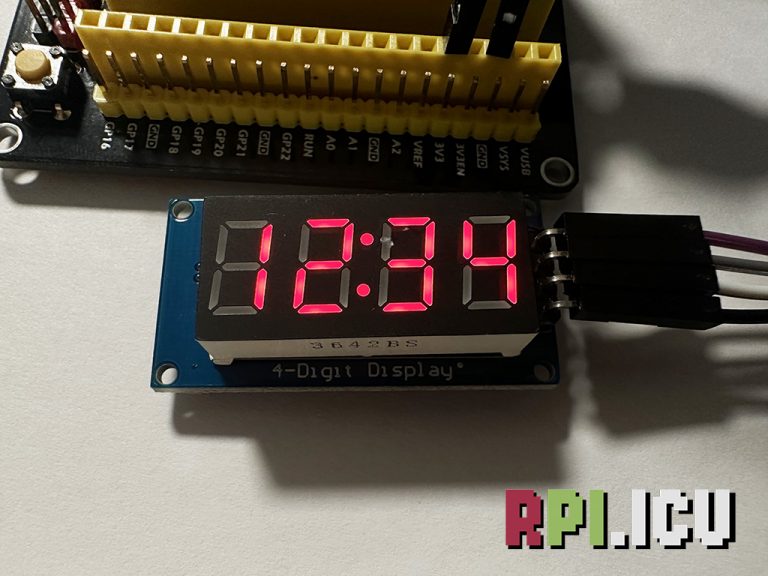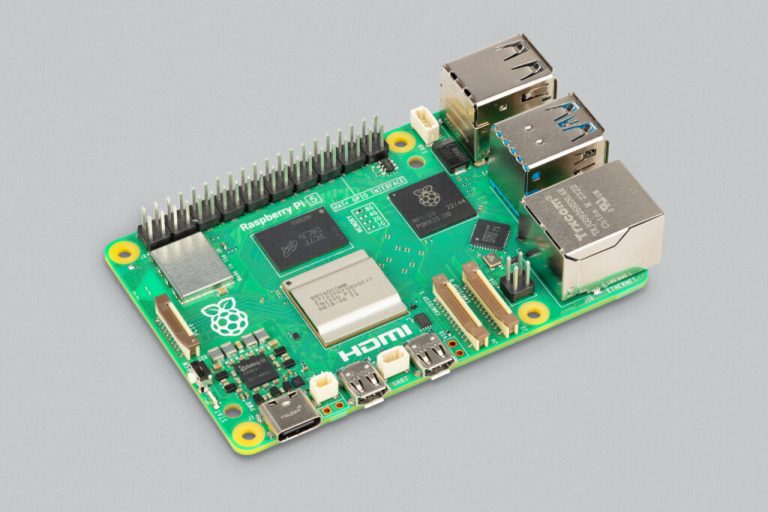Every new flagship Raspberry Pi product is accompanied by new accessories, and Raspberry Pi 5 is no exception. Layout changes, new interfaces, and much higher peak performance (and a smaller increase in peak power consumption) have led us to redesign some existing accessories, and to develop some entirely new ones.
Case
The updated case for Raspberry Pi 5, priced at $10, builds on the aesthetic of its Raspberry Pi 4 predecessor, but adds a host of new usability and thermal-management features.
An integrated 2.79 (max) CFM fan, with fluid dynamic bearings selected for low noise and an extended operating lifetime, connects to the four-pin JST connector on Raspberry Pi 5 to provide temperature‑controlled cooling. Air is drawn in through a 360‑degree slot under the lid, blown over a heatsink attached to the BCM2712 AP, and exhausted through connector apertures and vents in the base.
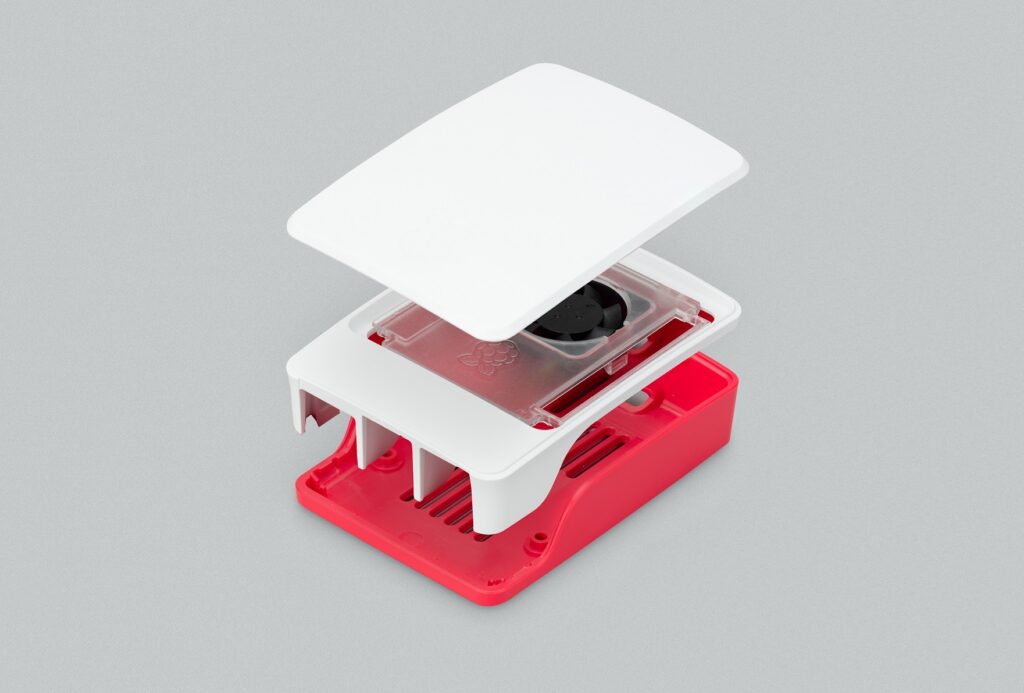
The Raspberry Pi Case for Raspberry Pi 5, showing its red base, the fan assembly with a white frame floating above it, and the white lid floating above that
We’ve lengthened the case, and tweaked the retention features, to make it possible to insert the Raspberry Pi 5 board without removing the SD card. And by removing the top of the case, it is now possible to stack multiple cases, as well as to mount HATs on top of the fan, using spacers and GPIO header extensions.
Like all our plastic products, the new case is manufactured by our friends at T-Zero, in the West Midlands, UK.
Active Cooler
Raspberry Pi 5 has been designed to handle typical client workloads, uncased, with no active cooling. Users who wish to use the board uncased under continuous heavy load, without throttling, have the option of adding a $5 Active Cooler. This attaches to the board via two new mounting holes, and connects to the same four-pin JST connector as the case fan.
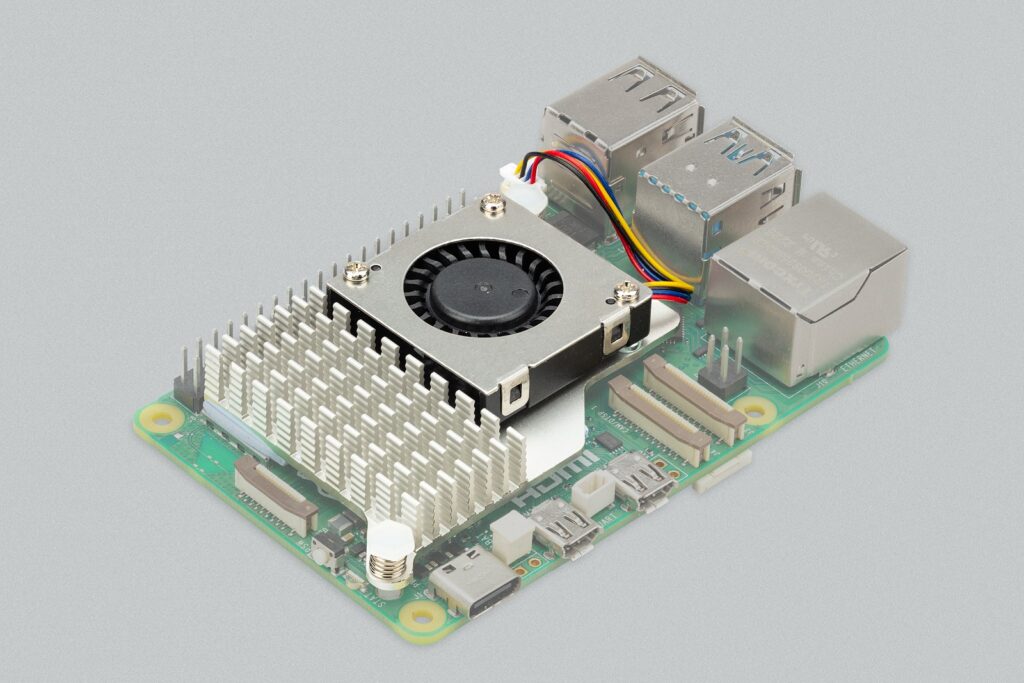
The Raspberry Pi Active Cooler mounted on a Raspberry Pi 5. The blower, heatsink, and wires connecting to the Raspberry Pi’s four-pin JST connector are visible.
A radial blower, again selected for low noise and extended operating lifetime, pushes air through an extruded and milled aluminium heatsink. Both the case and the Active Cooler are able to keep Raspberry Pi 5 well below the thermal throttle point for typical ambient temperatures and worst-case loads. The cooling performance of the Active Cooler is somewhat superior, making it particularly suitable for overclockers.
27W USB-C Power Supply
Raspberry Pi 5 consumes significantly less power, and runs significantly cooler, than Raspberry Pi 4 when running an identical workload. However, the much higher performance ceiling means that for the most intensive workloads, and in particular for pathological “power virus” workloads, peak power consumption increases to around 12W, versus 8W for Raspberry Pi 4.
When using a standard 5V, 3A (15W) USB-C power adapter with Raspberry Pi 5, by default we must limit downstream USB current to 600mA to ensure that we have sufficient margin to support these workloads. This is lower than the 1.2A limit on Raspberry Pi 4, though generally still sufficient to drive mice, keyboards, and other low‑power peripherals.
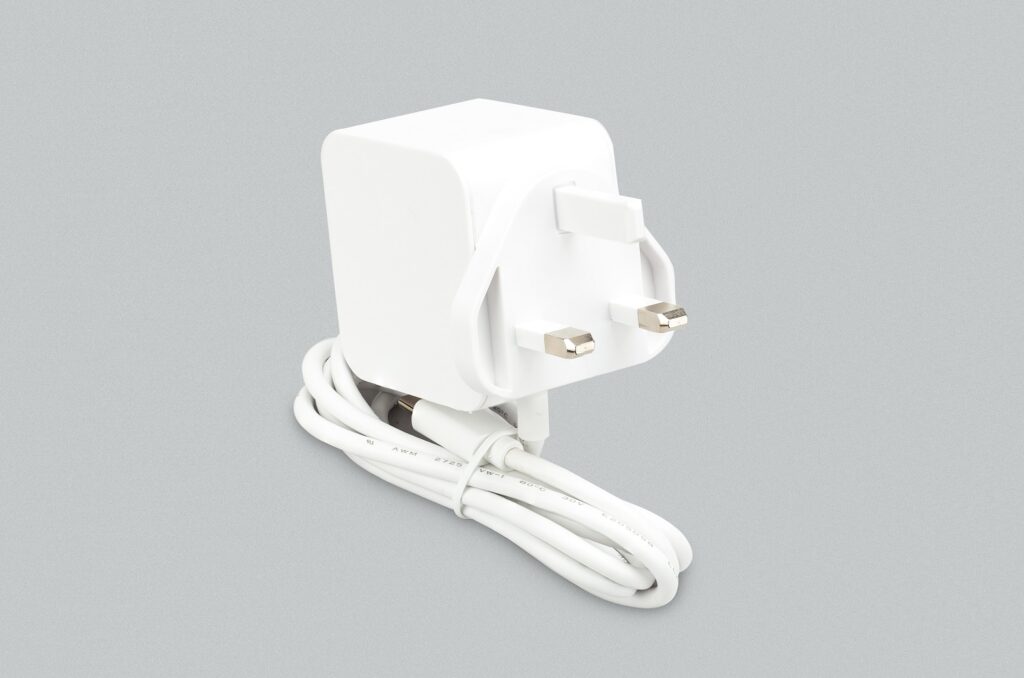
The white 3-pin UK variant of the new Raspberry Pi 27W USB-C Power Supply, pictured with the cable tightly wrapped with a cable tie and the pins facing towards the viewer
For users who wish to drive high-power peripherals like hard drives and SSDs while retaining margin for peak workloads, we are offering a $12 USB-C power adapter which supports a 5V, 5A (25W) operating mode. If the Raspberry Pi 5 firmware detects this supply, it increases the USB current limit to 1.6A, providing 5W of extra power for downstream USB devices and 5W of extra on-board power budget: a boon for those of you who want to experiment with overclocking your Raspberry Pi 5.
It should be noted that users have the option to override the current limit, specifying the higher value even when using a 3A adapter. In our testing, we have found that in this mode Raspberry Pi 5 functions perfectly well with typical configurations of higher-power USB devices, and all but the most pathological workloads.
Camera and display cables
The new, higher-density pinout of the MIPI connectors means that an adapter is required to connect our own cameras and displays, and third-party products, to Raspberry Pi 5.
To support existing camera and display owners, we are offering FPC camera and display cables, which convert from the higher-density format (now referred to as “mini”) to the older lower-density format (now referred to as “standard”). These cables are available in 200mm, 300mm, and 500mm lengths, priced at $1, $2, and $3 respectively.
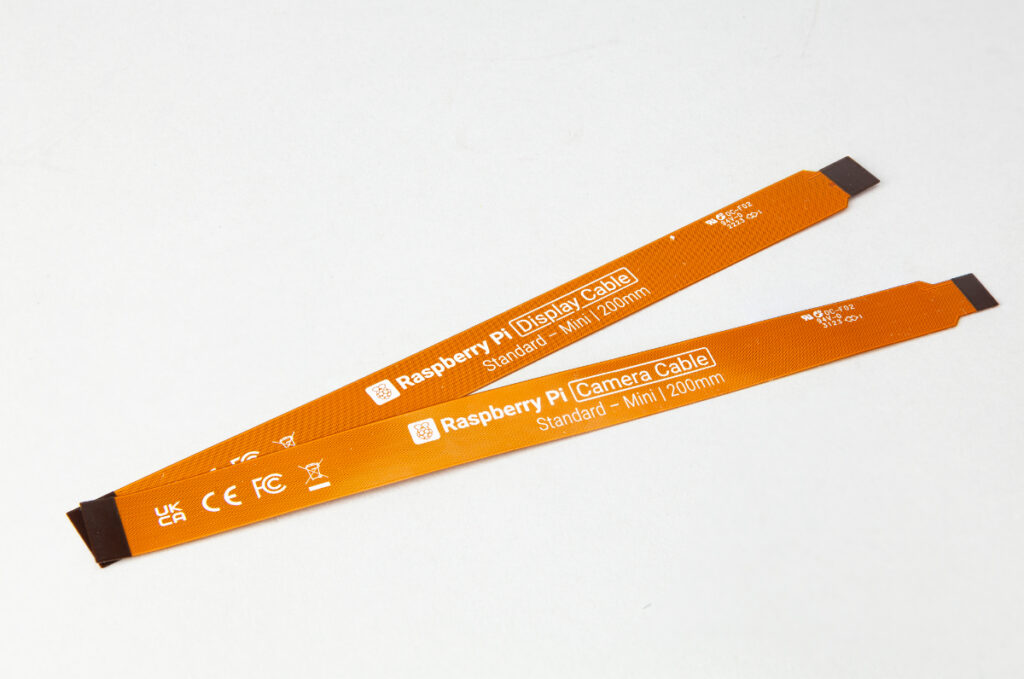
Two orange cables crossed at one far end lying flat on a plain grey background. White writing on the each cable says “Raspberry Pi Display Cable Standard Mini 200mm” with a Raspberry Pi logo in white and other legal safety logos in white
Camera Module 3, the High-Quality Camera, the Global Shutter Camera, and the Touchscreen Display will all ship with both a standard-to-standard and a 200mm mini-to-standard cable.
PoE+ HAT
From early 2024, we will be offering a new PoE+ HAT. This supports the new location for the four-pin PoE header, and has an L-shaped form factor which allows it to sit inside the Raspberry Pi 5 case without interfering mechanically or disrupting airflow.
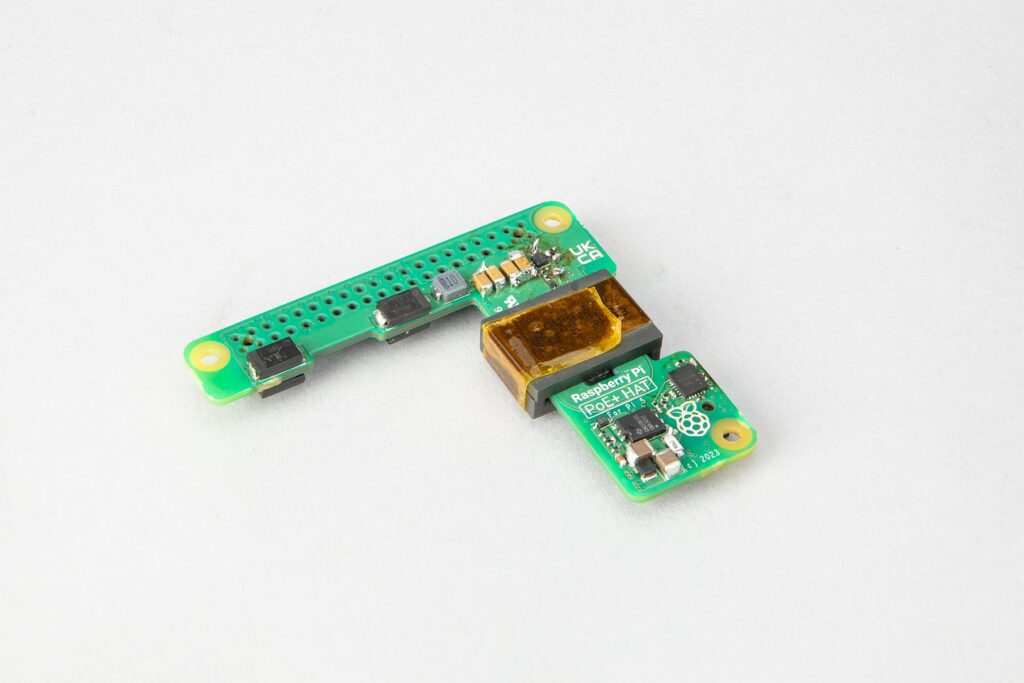
A visibly hand-soldered prototype of the L-shaped Raspberry Pi PoE+ HAT for Raspberry Pi 5
Prototype PoE+ HAT. We don’t know yet what the production version will look like, but we do know that it won’t look like this.
The new PoE+ HAT integrates a planar transformer into the PCB layout, and utilises an optimised flyback converter architecture to sustain high efficiency across the whole zero to 25W range of output powers.
M.2 HATs
One of the most exciting additions to the Raspberry Pi 5 feature set is the single-lane PCI Express 2.0 interface. Intended to support fast peripherals, it is exposed on a 16-pin, 0.5mm pitch FPC connector on the left-hand side of the board.
From early 2024, we will be offering a pair of mechanical adapter boards which convert between this connector and a subset of the M.2 standard, allowing users to attach NVMe SSDs and other M.2-format accessories. The first, which conforms to the standard HAT form factor, is intended for mounting larger devices. The second, which shares the L-shaped form factor of the new PoE+ HAT, supports mounting 2230- and 2242-format devices inside the Raspberry Pi 5 case.
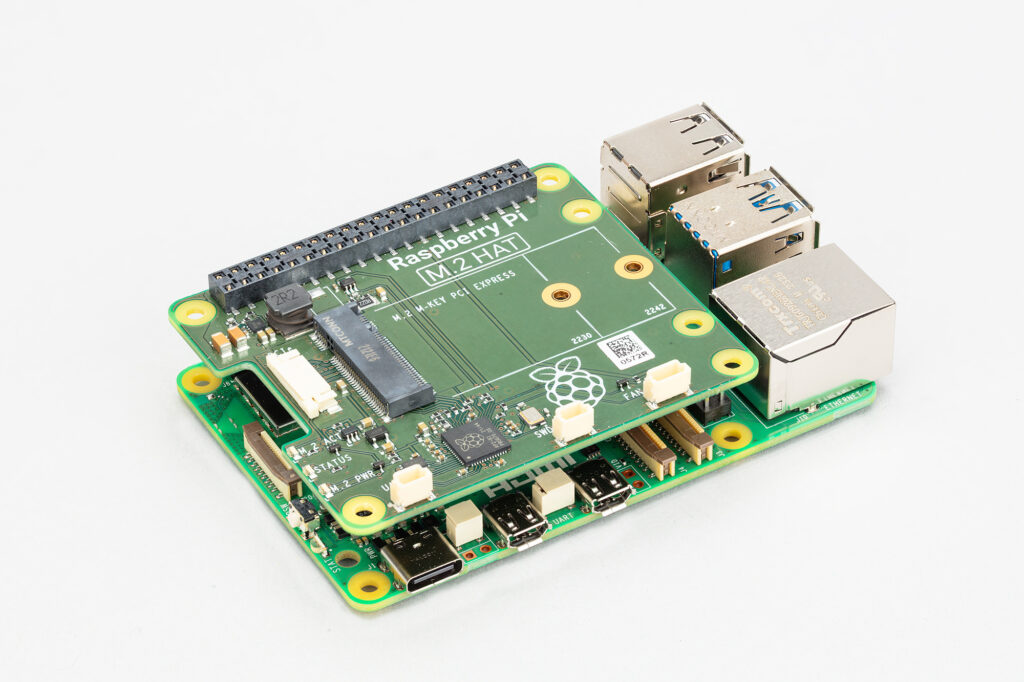
Prototype of the larger (standard HAT form factor) M.2 HAT, mounted on a Raspberry Pi 5Prototype M.2 HAT. Final hardware will not look like this.
Raspberry Pi Beginner’s Guide, 5th Edition
Sporting a brand-new look and feel, and priced at RRP £19.99 ($24.99), this new edition of our bestselling Raspberry Pi Beginner’s Guide is the definitive manual for Raspberry Pi computers and accessories. It has been comprehensively updated to cover Raspberry Pi 5, and the upcoming release of Raspberry Pi OS based on Debian Bookworm.
RTC battery

RTC coin cell connected by red and black jumper wires to a two-pin JST plug
Last, but very much not least, we have sourced a Panasonic lithium manganese rechargeable coin cell, with a pre-fitted two-pin JST plug and an adhesive mounting pad. This is priced at $5, and is suitable for powering the Raspberry Pi 5 real-time clock (RTC) when the main power supply is disconnected.
A newer, better Raspberry Pi OS
In parallel with the final stages of the Raspberry Pi 5 programme, our software team has been busy developing a new version of Raspberry Pi OS, the official first-party operating system for Raspberry Pi devices. This is based on the most recent release of Debian (and its derivative Raspbian), codenamed “Bookworm”, and incorporates numerous enhancements, notably the transition from X11 to the Wayfire Wayland compositor on Raspberry Pi 4 and 5.
Raspberry Pi OS will launch in mid-October, and will be the sole supported first-party operating system for Raspberry Pi 5. Keep checking back here: we’ll be telling you some more about the new OS, and you’ll be able to download it shortly before Raspberry Pi 5 arrives on the shelves in late October.

